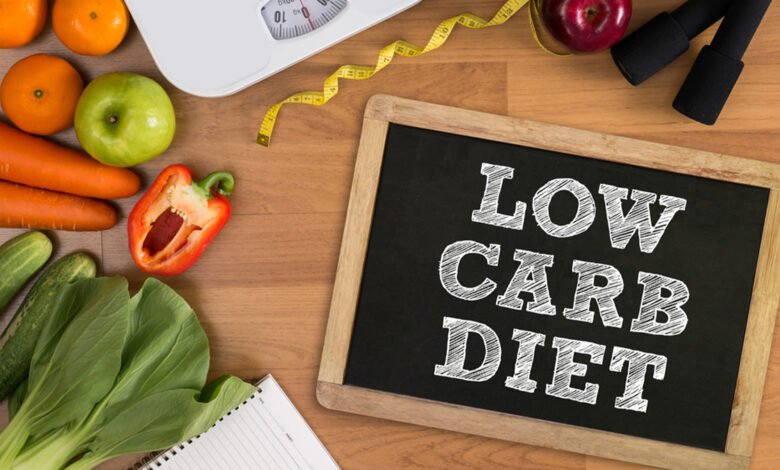Low Carb Diet

In the fight against obesity and weight gain, adopting a low carb diet is becoming a go-to strategy for millions seeking to improve their health. With rising obesity rates across the globe, a well-structured low-carb lifestyle offers a path to weight loss, better energy, and enhanced overall well-being.
If you’re looking to gain control of your weight and transform your health, this guide will provide you with everything you need to know about the benefits of a low carb diet, how to start, and how to stick with it for the long haul.
Why Are We Gaining Weight?
The truth is, many of us are eating a lot more than we should. The food we’re eating is often packed with sugar, unhealthy fats, and processed ingredients, which mess with our metabolism and insulin levels. Add to that a pretty sedentary lifestyle, and it’s no wonder why people are gaining weight.
This is where a low carb diet comes in. By cutting down on carbs, particularly those that cause spikes in blood sugar, you help stabilize your body and stop that constant cycle of craving and overeating. Plus, it helps control your calorie intake without the constant need to count every little thing.
What is a low carb diet?
A low carb diet is pretty simple: you reduce the number of carbohydrates you eat—foods like pasta, bread, potatoes, and sugary snacks—and focus more on protein and healthy fats. Instead of carbs, your body uses fat for energy, which means you’re burning through those fat stores instead of just relying on glucose (sugar) for fuel.
The cool part is that a low-carb diet doesn’t mean you have to eliminate carbs completely. The goal is to eat a lower percentage of carbs than what’s typically recommended—around 5% to 45% of your daily calorie intake. This helps keep insulin levels stable and prevents those blood sugar spikes that make you feel sluggish and hungry all the time.
Benefits of a Low Carb Diet
Alright, so why should you give it a try? There are some pretty solid reasons:
- Weight Loss: Cutting carbs leads your body to start burning fat for energy instead of storing it. Say goodbye to those stubborn pounds!
- More Energy: Once you cut out the sugar rollercoaster, you’ll notice more consistent energy throughout the day.
- Better Mental Clarity: When your blood sugar is stable, you’ll feel more focused and less distracted.
- Healthier Heart and Body: A low-carb diet can help lower the risk of heart disease, diabetes, and even joint pain. Plus, it helps with managing blood sugar, which is a big deal for people with or at risk for diabetes.
- Feel-Good Mood: Many people say they experience better moods and fewer mood swings once they start following a low-carb plan.
Low Carb Diet Safe?
For most people, yes! Low carb diets are totally safe, but like anything, you should do it right. Some extreme low-carb diets, like keto, can be tricky if they’re not balanced properly, which is why it’s a good idea to check in with your doctor before diving in, especially if you have any health conditions.

It’s all about balance. A healthy low-carb diet should still include vegetables, healthy fats, and enough protein. It’s important to avoid cutting out entire food groups that provide essential nutrients. So, no need to go overboard with eliminating every single carb!
How to Get Started: Sample Low Carb Meal Plan
low carb diet foods
Starting a low-carb lifestyle doesn’t have to be complicated. Here’s a simple meal plan to help you ease into the diet, ensuring it’s both delicious and nutritious.
Breakfast:
- Option 1: A 7-egg white omelet with mushrooms and bell peppers.
- Option 2: Oats with fresh berries or pineapple.
Lunch:
- Option 1: 3 hard-boiled eggs with a large salad and low-carb dressing.
- Option 2: 200g of lean protein (chicken, fish, or steak) with one cup of steamed greens.
Snack:
- Option 1: A serving of string cheese.
- Option 2: A handful of nuts, such as almonds or cashews.
Dinner:
- Option 1: A 6-egg omelet with smoked salmon and a side of leafy greens.
- Option 2: Grilled chicken with mixed vegetables and a dollop of cottage cheese.
Dessert:
- Option 1: Strawberries dipped in sugar-free dark chocolate.
- Option 2: A serving of low-sugar gelatin.

How to Shop Smart for a Low Carb Diet
high protein low carb diet
The good news? Eating low-carb doesn’t have to be expensive. Here are some tips to help you stick to your budget while eating healthy:
- Stick to whole foods: Fresh vegetables, meats, and healthy fats should be your go-to. Avoid pre-packaged foods that are full of hidden sugars.
- Go seasonal: When fruits and veggies are in season, they’re cheaper—and you can freeze them to enjoy later!
- Don’t overspend on meat: Choose less expensive cuts like chicken thighs, or go for slow-cooked options like chuck steak that’s just as tasty.
- Plan your meals: Pre-planning your meals helps avoid last-minute takeout, which can derail your progress.
Eating Out on a Low Carb Diet: Yes, It’s Possible!
Eating out doesn’t have to be a hassle. Here’s how to make it work:
- Know your options: Look for grilled meats, salads, or non-breaded fish. Skip the pasta and potatoes, and ask for extra veggies.
- Plan ahead: Many restaurants have menus online—check them out before you go, or call ahead to ask about ingredients.
- Stay strong: Tempted by bread baskets or desserts? Remember your goals and make smart choices. You got this!
How to Stick with It: Maintaining Your Low Carb Lifestyle
low carb diet plan
Like any lifestyle change, consistency is key. Here’s how to make sure you stay on track:
- Set clear goals: Whether you want to lose weight or just feel better, having specific goals helps keep you motivated.
- Track your progress: Keep a food journal or use an app to track what you eat and see your progress.
- Get support: Check in with your doctor or nutritionist to ensure you’re staying healthy while cutting carbs.
- Be patient: Changes take time, so be consistent, and soon, it’ll feel like second nature.
Avoid These Low Carb Diet Mistakes
As with any new eating plan, there are some common pitfalls. Here’s how to avoid them:
- It’s not about eliminating all carbs: You don’t need to cut carbs entirely—just be strategic about which ones you eat.
- Don’t forget the veggies: They provide fiber and essential nutrients, so load up on them!
- Balance your meals: A low-carb diet still needs healthy fats and proteins—don’t make it all about the meat.
- Don’t overeat: You can’t eat unlimited amounts of low-carb food. Stick to your portion sizes.
- Plan your meals: Without planning, you might slip back into old habits. A little prep goes a long way!
A low carb diet is more than just a way to lose weight; it’s a lifestyle change that can lead to more energy, better health, and improved mood. By focusing on the quality of the foods you eat, stabilizing your blood sugar, and cutting back on processed carbs, you’ll be well on your way to feeling your best.
Read Also:








